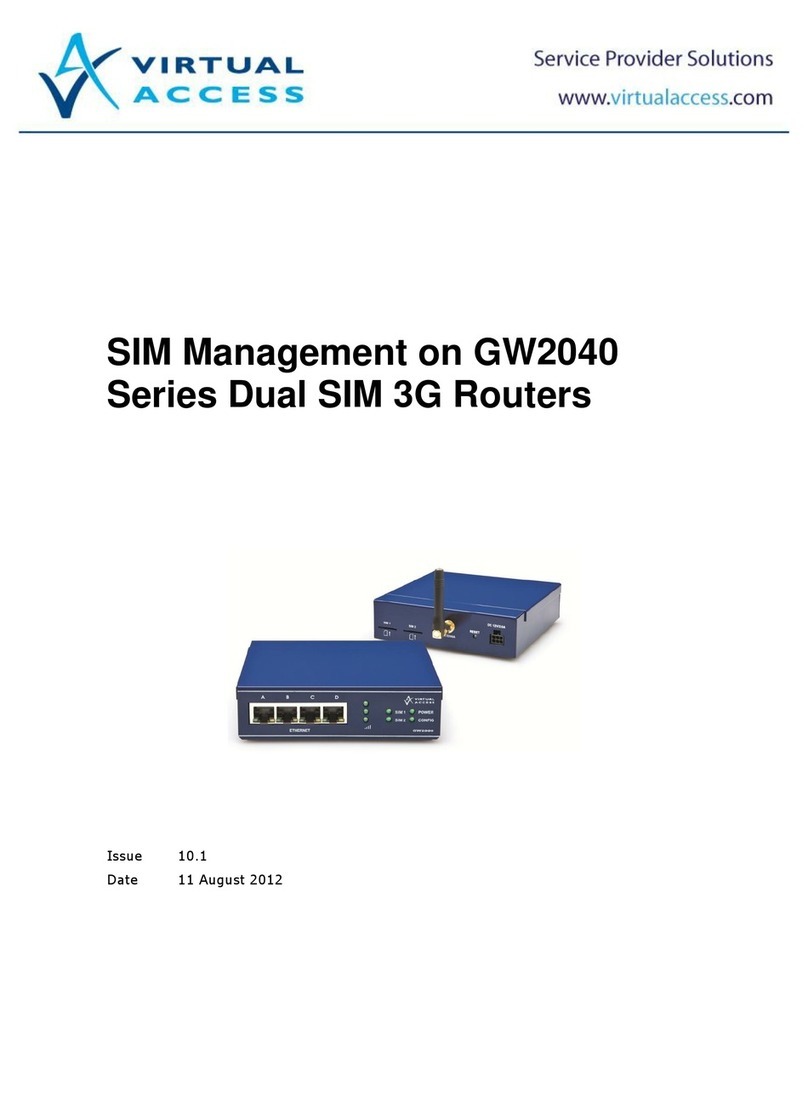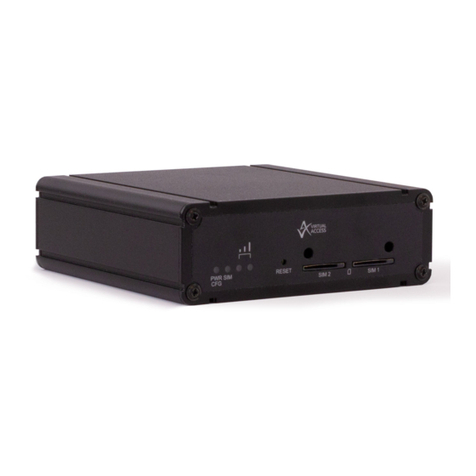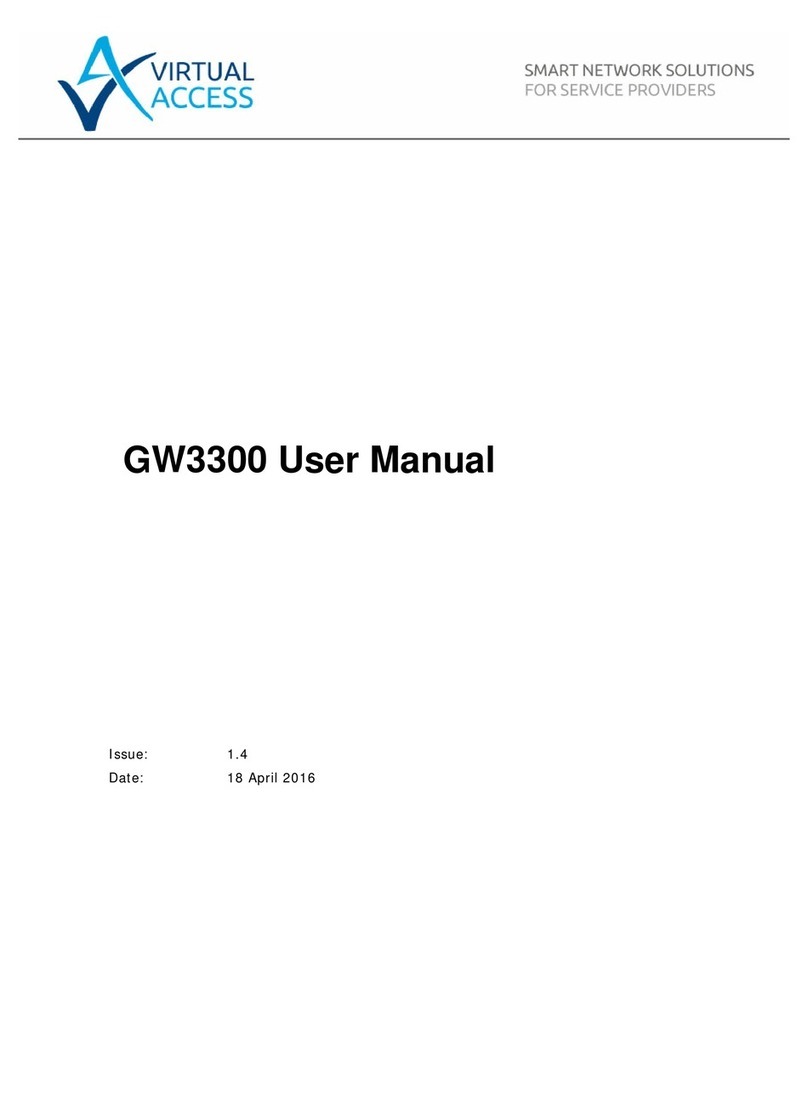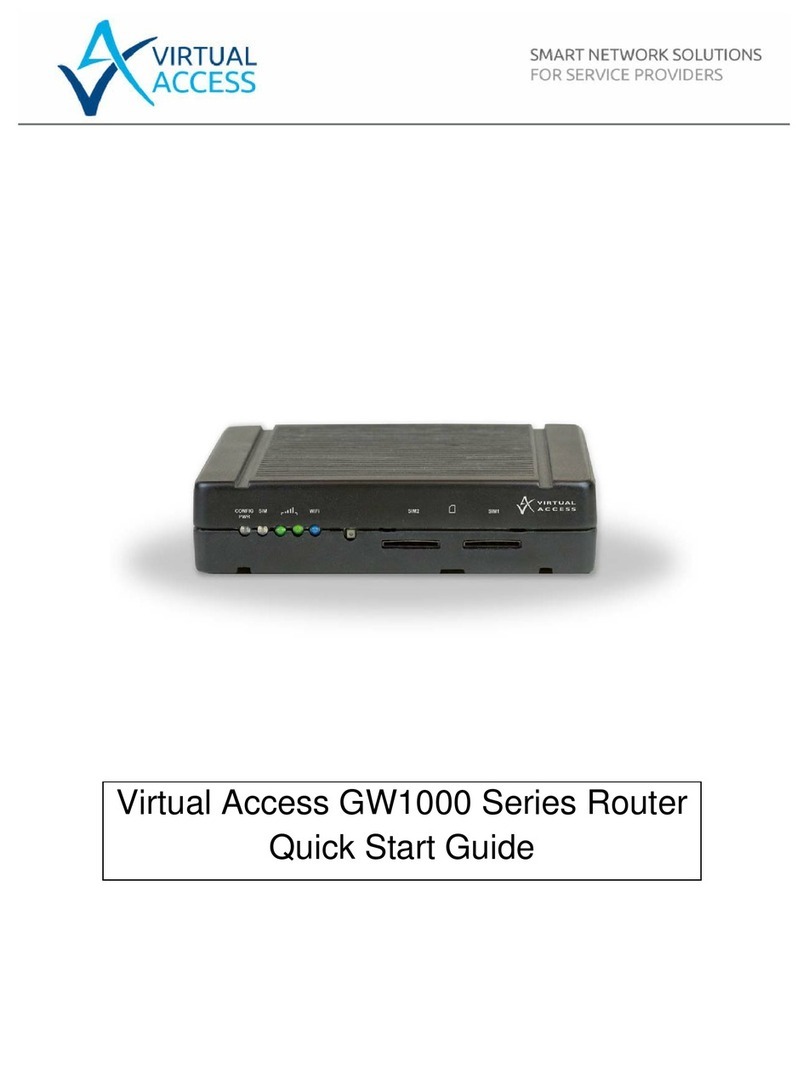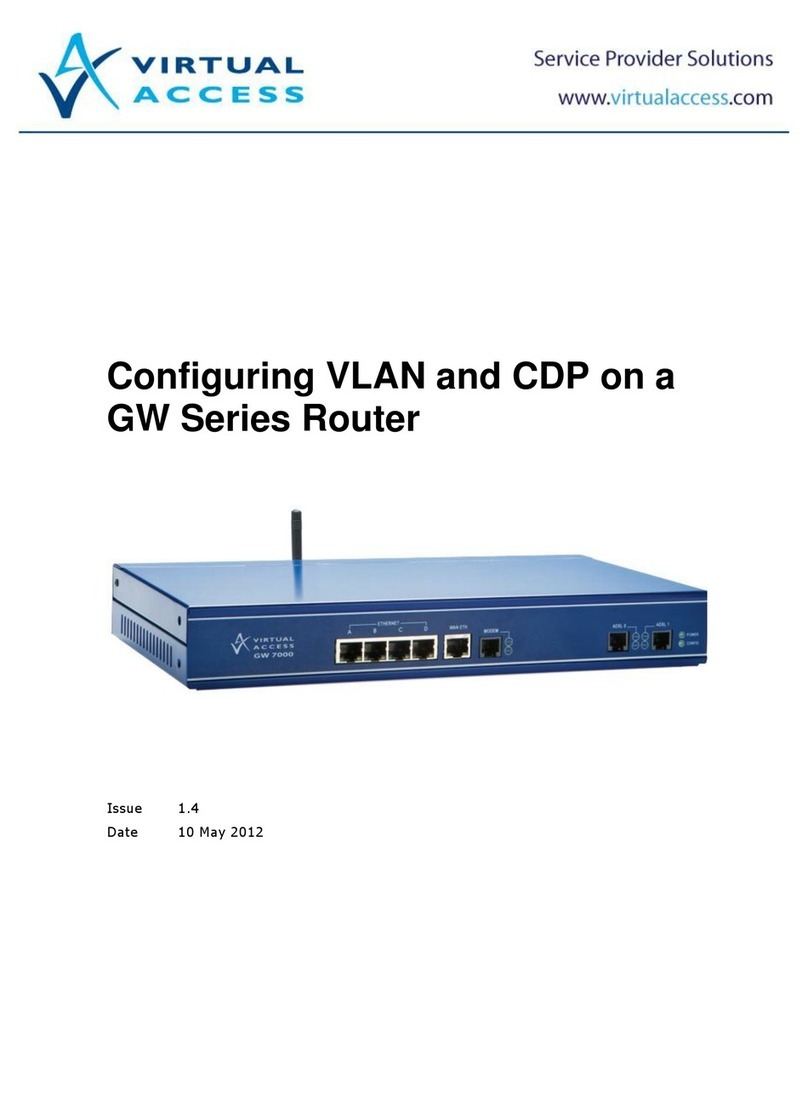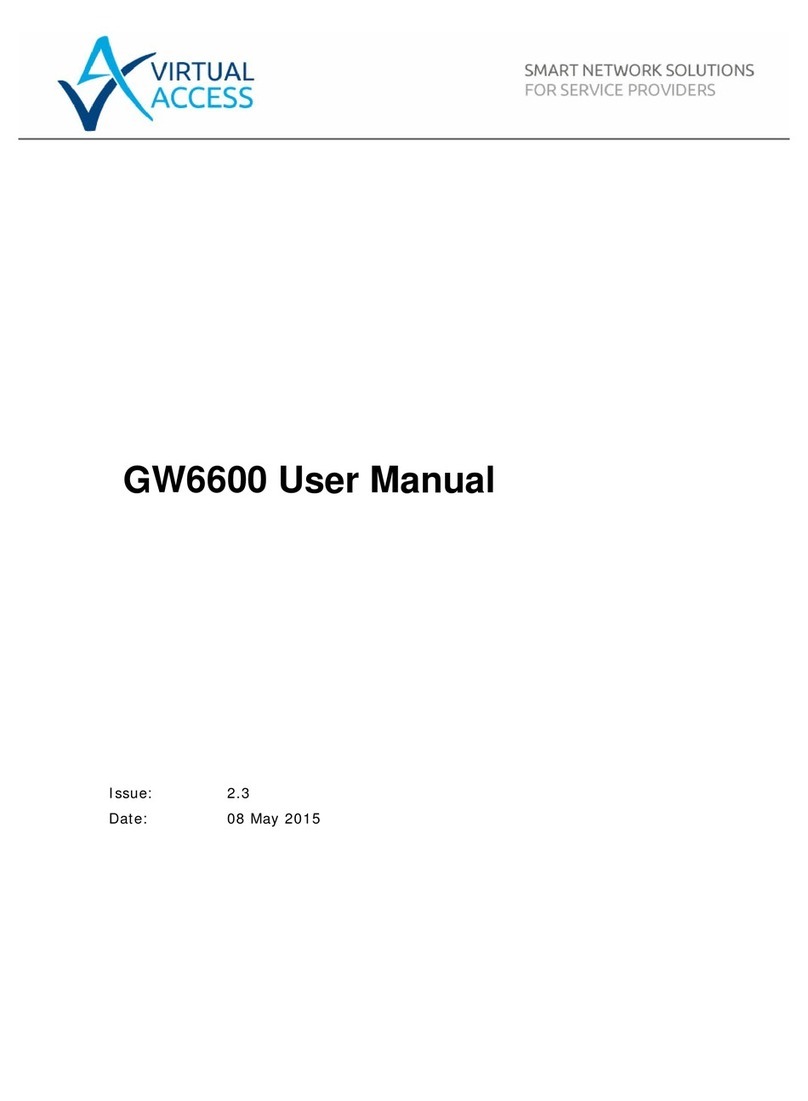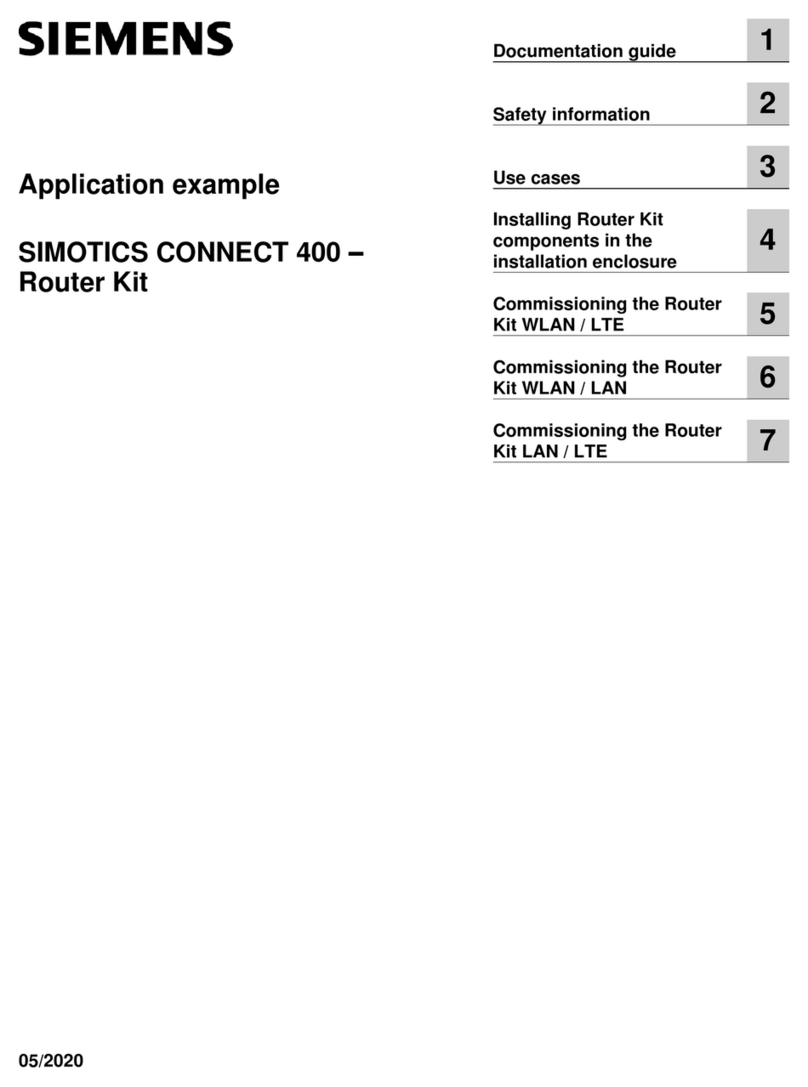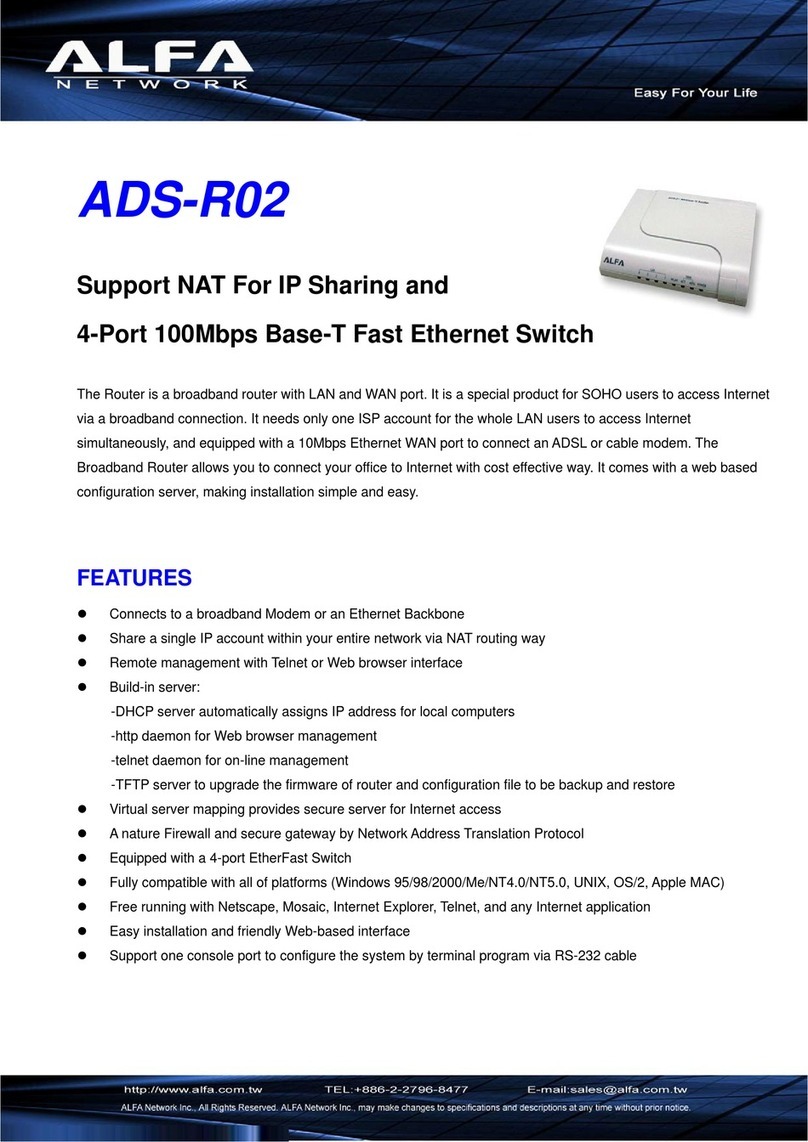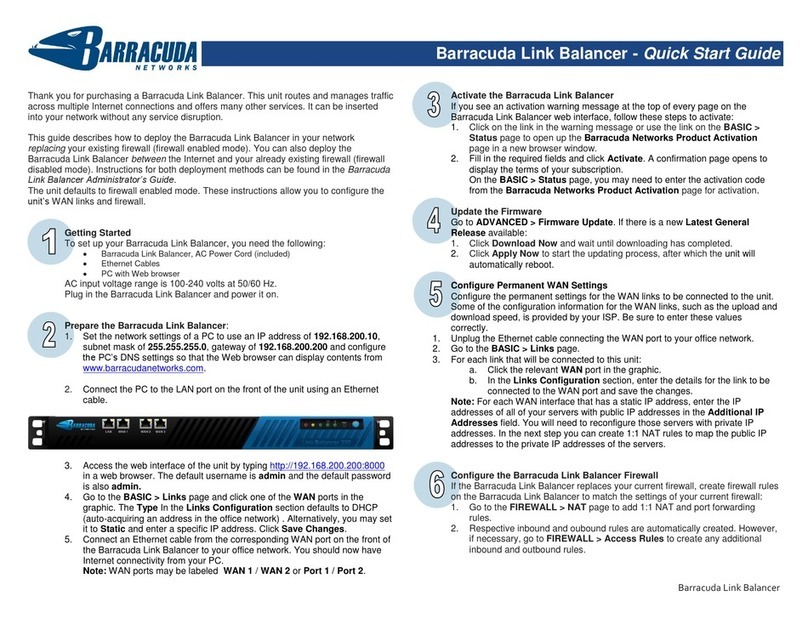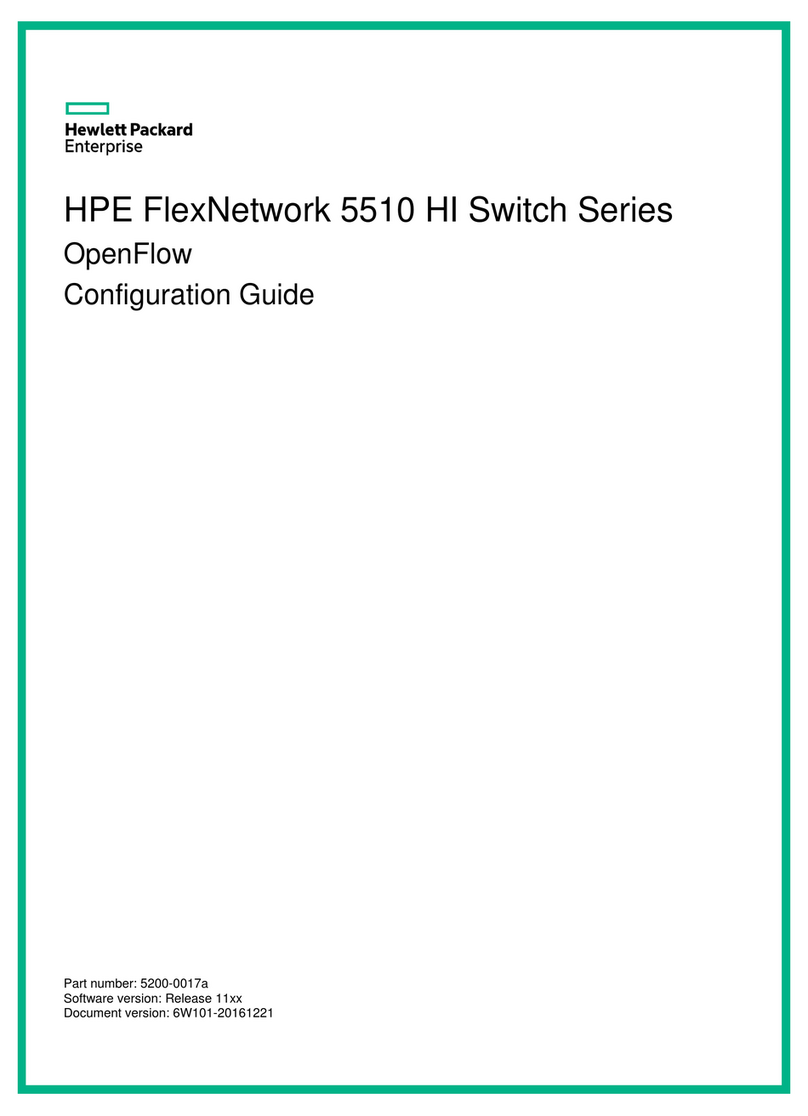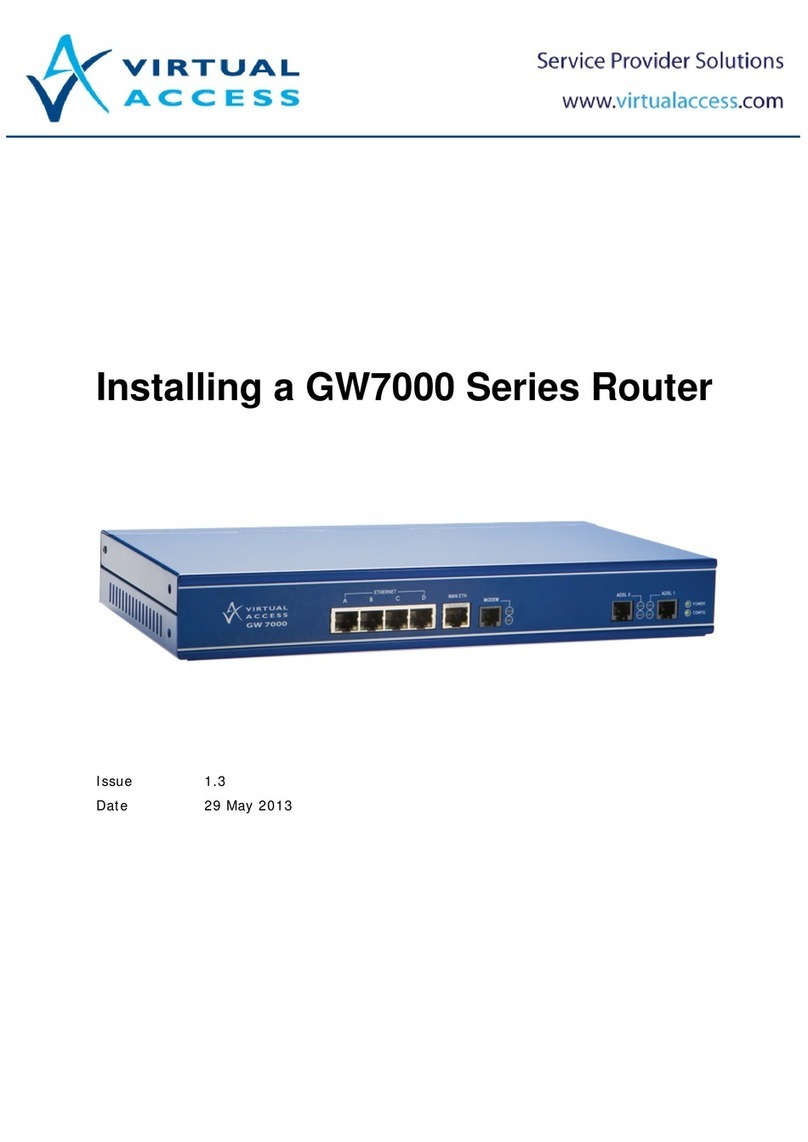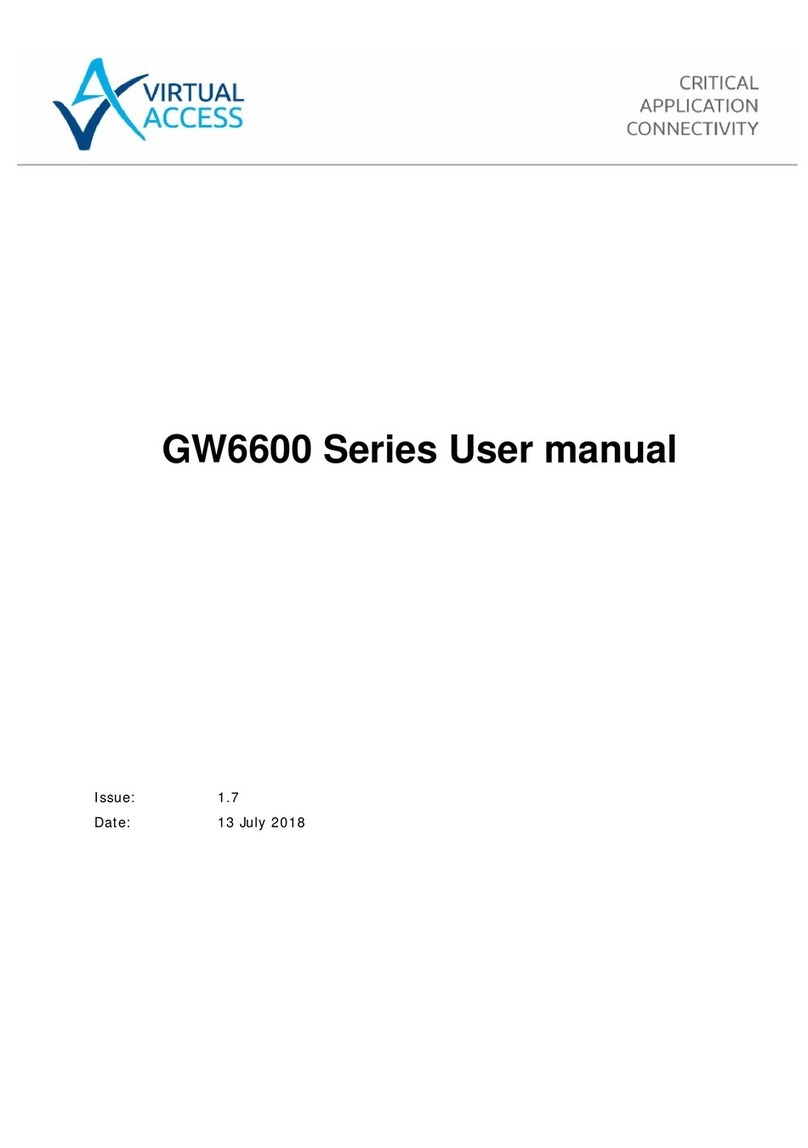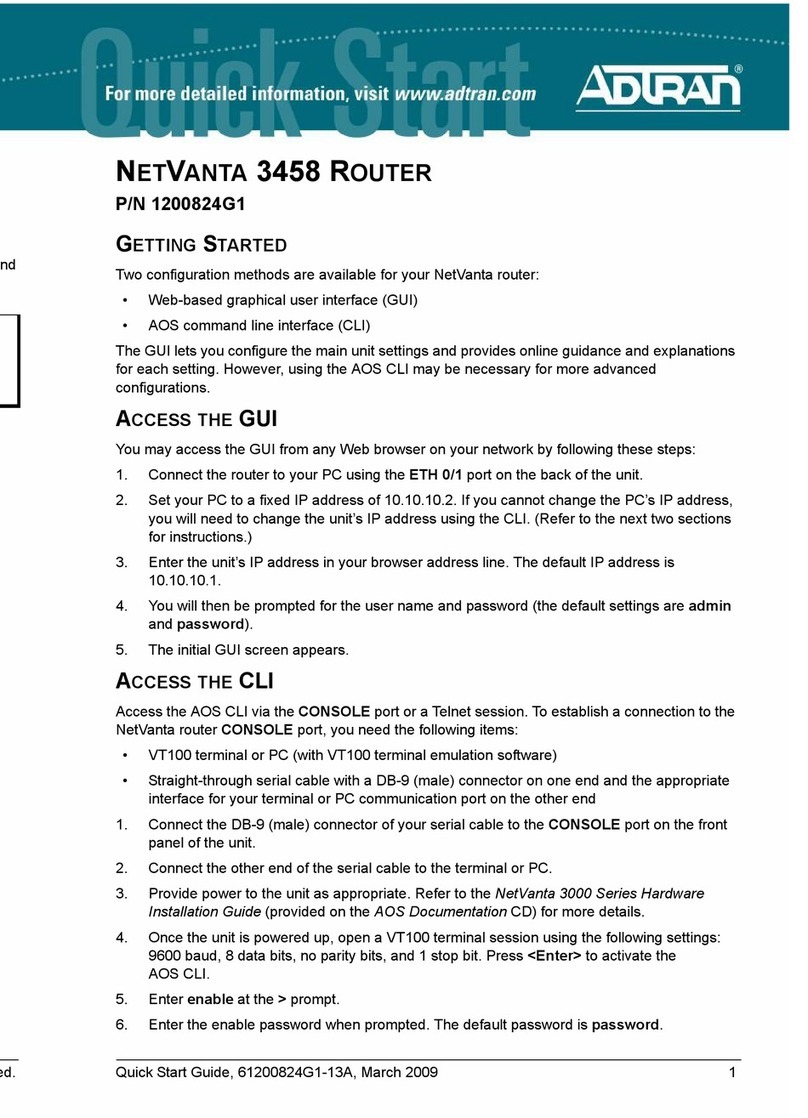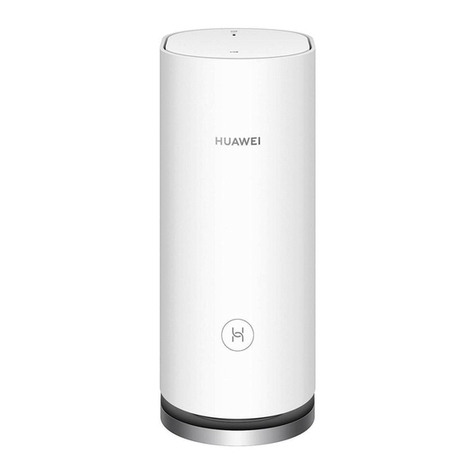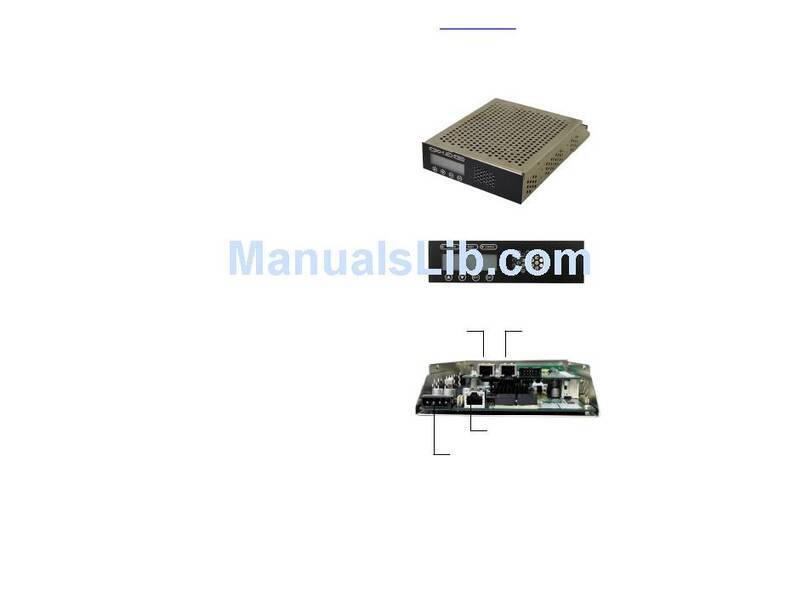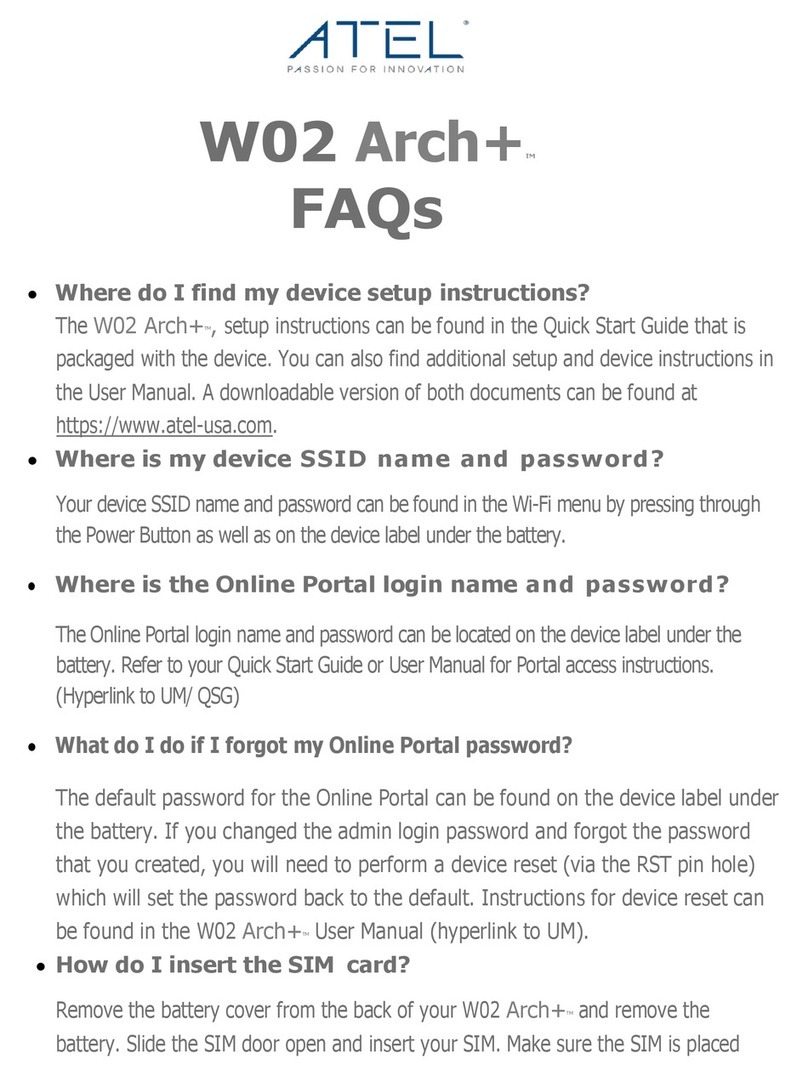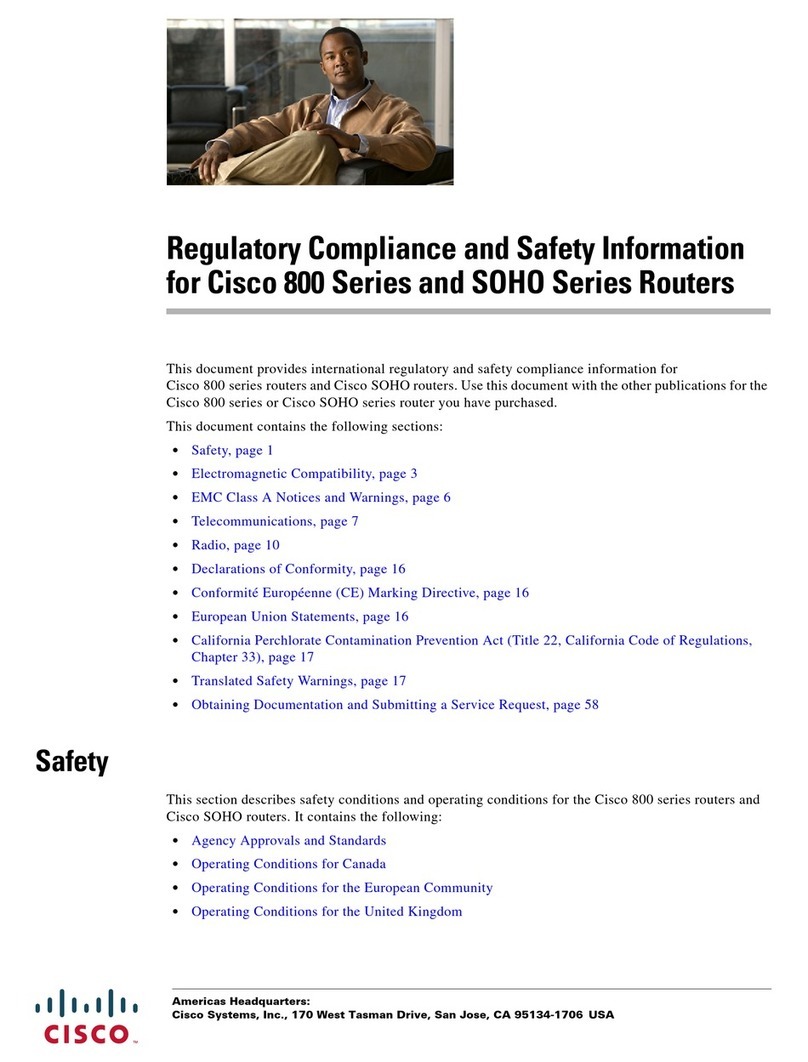
Table of Contents
_______________________________________________________________________________________________________
_______________________________________________________________________________________________________
© Virtual Access 2016
GW6600 Series and GW6600V Series User Manual
Issue: 1.5 Page 2 of 384
1Introduction .................................................................................................9
1.1 Document scope .......................................................................................9
1.2 Using this documentation...........................................................................9
2GW6600 Series hardware ...........................................................................12
2.1 Hardware specification............................................................................. 12
2.2 Hardware features .................................................................................. 12
2.3 GSM and LTE technology.......................................................................... 13
2.4 Power supply.......................................................................................... 13
2.5 Dimensions ............................................................................................ 13
2.6 Compliance ............................................................................................ 13
2.7 Operating temperature range ................................................................... 13
2.8 Antenna................................................................................................. 14
2.9 Components........................................................................................... 14
2.10 Inserting the SIM cards ........................................................................... 15
2.11 Connecting the SIM lock .......................................................................... 15
2.12 Connecting cables................................................................................... 15
2.13 Connecting the antenna........................................................................... 15
2.14 Connecting the WiFi antenna.................................................................... 15
2.15 Powering up ........................................................................................... 16
2.16 Reset button .......................................................................................... 16
3GW6600 Series LED behaviour....................................................................17
3.1 Main LED behaviour................................................................................. 17
3.2 Ethernet port LED behaviour .................................................................... 19
4Factory configuration extraction from SIM card .........................................20
5Accessing the router...................................................................................21
5.1 Configuration packages used.................................................................... 21
5.2 Accessing the router over Ethernet using the web interface.......................... 21
5.3 Accessing the router over Ethernet using an SSH client ............................... 22
5.4 Accessing the router over Ethernet using a Telnet client .............................. 23
5.5 Configuring the password......................................................................... 23
5.6 Configuring the password using the web interface....................................... 23
5.7 Configuring the password using UCI.......................................................... 24
5.8 Configuring the password using package options......................................... 24
5.9 Accessing the device using RADIUS authentication...................................... 25
5.10 Accessing the device using TACACS+ authentication ................................... 26
5.11 SSH ...................................................................................................... 29
5.12 Package dropbear using UCI..................................................................... 31
5.13 Certs and private keys............................................................................. 32
5.14 Configuring a router’s web server ............................................................. 33
5.15 Basic authentication (httpd conf) .............................................................. 38




